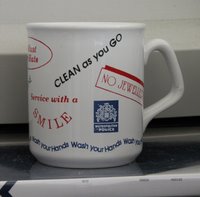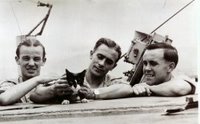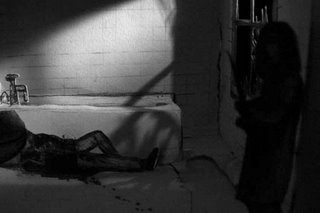 The BBC1 documentary 'Real Story' tonight, which reported on the illegally harvested body parts from the USA, was quite disturbing... the story accidentally came to light about a year ago, when a funeral home person noticed that a corpse's leg bones had been replaced with plastic piping used by plumbers. Parts of corpses - skin, bones and other tissue - were harvested and sold on to biomedical tissue processing companies, for supply to medical organisations for surgical use. Consent documents were forged, along with other required legal papers needed for the legitimate donation and supply of healthy tissue for medical purposes.
The BBC1 documentary 'Real Story' tonight, which reported on the illegally harvested body parts from the USA, was quite disturbing... the story accidentally came to light about a year ago, when a funeral home person noticed that a corpse's leg bones had been replaced with plastic piping used by plumbers. Parts of corpses - skin, bones and other tissue - were harvested and sold on to biomedical tissue processing companies, for supply to medical organisations for surgical use. Consent documents were forged, along with other required legal papers needed for the legitimate donation and supply of healthy tissue for medical purposes.A US investigator interviewed in the documentary said that a whole corpse, when 'harvested' and cut up into saleable elements, would be worth around $150,000. In this country, the Welsh recipients of stolen bone fragments found the news of the origin of their bone graft material, post-operation, disturbing (unsurprisingly). Apart from the possibility of acquiring diseases such as syphilis, HIV and hepatitis from the bone, the idea that it had been obtained without consent from someone who probably didn't want to be chopped up after death was also disturbing.
Although tissue processing companies did a 'product recall' after the story broke, it's not quite the same as removing contaminated tins from a supermarket shelf... bone chips are used in grafts as they gradually knit together with the other existing bone tissue, so the illegally obtained tissue becomes part of the recipient's own body.
I found the film of 'bone chips' being processed in a UK plant rather gruesome, with frozen human body parts being fed into a industrial equivalent of a food processor and coming out finely minced... but all perfectly legitimate for medical use. I really don't want to minimise the seriousness of the original issue, but visually the footage reminded me of Jamie Oliver's attempt to put schoolkids off eating over-processed meat products last year, by showing how meaty bits ended up reshaped as 'Turkey Twizzlers'...








